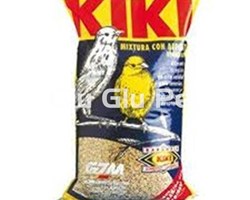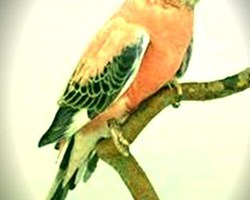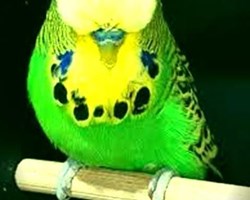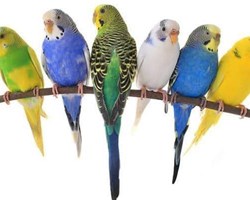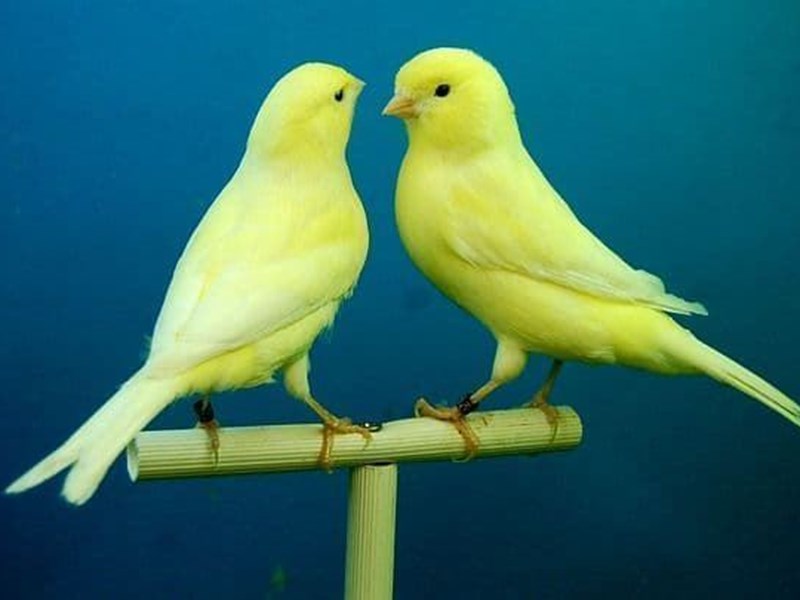
ALL ABOUT YOUR CANARY.
ORIGIN:
The wild canary or serín canario is a species of passerine bird of the fingillid family. Despite its common and scientific name, it is native to several archipelagos of Macaronesia: the Canary Islands, Azores and Madeira, and not only the first.
Scientific name: Serinus canaria.
Number of eggs: 3-4.
Life expectancy: male: 10 years in captivity.
Body mass: 8.4- 24 gr.
Conservation Status: Least Concern, Stable.
Length: 10-12cm.
The domestic canary is a subspecies developed over centuries of captive selection based on specimens of the wild canary or wild canary, a bird species of the passerine order of the fingilidae family, endemic to the Canary Islands, Azores and Madeira.
Scientific name: Serinus canaria domestica.
Average lifespan: red factor canary: 10-12 years.
Length: 12-20cm.
Superior classification: serinus canaria.
Species: serinus canaria.
Family: Fringilidae.
The canary is the most popular domestic bird in the world, to the point that, despite having a fairly limited dispersal area in the wild, they are found in cages and aviaries in all the countries of the world, adapting, although with the pertinent care, to all climates and latitudes.
The domestic canary was first bred in the 17th century. The specimens captured in their original habitat were taken to Europe by Spanish sailors.
His breeding became very popular in the courts of European kings and his prices were prohibitive.
The monks were the ones who began to breed it, and to keep the price high, they only sold male specimens, which are the ones that sing.
Finally, some Italian breeders obtained females and were able to breed them themselves, thus becoming very popular throughout continental Europe.
In England at first they were owned only by wealthy people but, over time, they began to be bred there as well, becoming very popular and many breeds arising through selective breeding.
INDEX:
1.- BEHAVIOR.
2.- CHARACTERISTICS.
3.- CLASSIFICATION.
4.- NUTRITION.
5.- PRICE.
6.- CARE.
7.- HEALTH.
1.- BEHAVIOR:
These birds are usually somewhat shy, and do not respond well to physical contact with people. This is why they are not the best pets for children, as they are easily stressed by noise.
In a quiet home, canaries get used to the presence of people and can interact with their owners, always from the safety of their cage.
These birds are not very social, so a canary can only live happily in its cage, and with proper care, its life expectancy can reach 10 years.
They are also quite territorial birds and if they are forced to live together, there can be fights for supremacy between them.
Canaries fill any space with life with their songs. A soundtrack highly appreciated by those who enjoy these beautiful birds, extremely elegant despite the humility of their size.
But it is important to know that the song we hear is none other than an expression of happiness. A way to share with the world around them that they enjoy physical and emotional well-being. An aspect that must be taken care of as much as any other.
Singing is not instinctive in the behavior of canaries. A canary does not feel the physiological obligation to sing. If we have a canary that sings little or does not sing, we have to analyze the reason, because its absence is a true indicator that our animal does not have everything it needs.
The thing is not how to improve the song of the canary. It consists of something much more relevant: making them happy by our side.
For this to happen, you must ensure that it has its proper habitat. In addition, you will have to make sure that it is in the moulting season, which is another of the times when they stop singing.
You should be very careful with the cold if you live in places with extreme temperatures, since canaries tolerate heat much better than cold.
Canaries learn by imitation. If you have a canary that has not lived long enough with others of its kind, it will be good for you to listen to the songs of other canaries. That way you will learn better to sing your trill.
If the canary is accompanied in the cage by a female of its species, it will sing less, since they sing precisely because of their need to feel accompanied.
2.- CHARACTERISTICS:
Canaries are small birds (no more than 10-12 cm long) and come from the Canary Islands.
They belong to the finch family and there are many varieties within the species, which are classified by their song or color. In addition to the classic yellow canary, there are specimens of other colors that are obtained through crosses, such as; white, red, bronze and all their combinations.
Male canaries have a more pleasant voice and a broader repertoire than females, but they practically stop singing during the moulting season.
The canary is the largest of all the birds that make up the finch family, measuring about 15 to 16 centimeters in length.
BEAK: It is short and pointed.
COLORATION: its feathers can be yellow, gray or green.
Their life expectancy in the wild is usually between 5 and 10 years at most.
Canaries are small birds that are usually about 13 centimeters long.
Although the original wild canaries are rather dull in color, the domestic canaries that we can find today are in bright colors.
3.- CLASSIFICATION:
The domestication of this bird is quite early, which explains why over time it has given way to the existence of different breeds.
Depending on the purpose of each of them, they are usually divided into three large groups:
- Singing Canaries (the most appreciated by canariculturists).
- colored canaries.
- Posture canaries.
1.- Singing Canaries: The different breeds that comprise the group of singing canaries are usually differentiated from each other by the type of chirps and trills that each of them emits, which giving their physical characteristics, as well as the tonalities of plumage, relegated , by breeders, who only seek to obtain specimens with the quality of good singers.
The most characteristic breeds of this group are:
- Spanish stamped canary.
- Roller Canary.
- Malinois canary.
- American Canary.
- Spanish stamped canary: as the name of the breed indicates, it emerged in Spain, its origin being towards the end of the first half of the 20th century. The color is yellow or also green (in reality, one that has reddish or orange tones in its livery should never be considered a Spanish stamped canary). As for its build, it has an average length (from beak to tail) of 13 cm. Its appearance gives the impression, despite its small size, of physical strength. The singing beauty of the Spanish timbrado (it is the determining factor of the race) resides in the immense variety of notes, tones and rhythms; this makes a male specimen (females do not sing) give us true recitals and not the simple repetition of a few chirps, as occurs with several species of songbirds.
- Roller Canary: The Roller Canary (also called flute, harzer or edelroller) is the oldest known variety of singing canary. It comes, like all songs, from exports of wild canaries from the Canary Islands. From the end of the 17th century, the canary was bred in many areas of Northern Europe. In Germany, starting in Nuremberg, and in the Harz mountains. From the canaries used by the miners to detect firedamp, a bird with a deep, soft and melodic song was achieved that was highly appreciated and spread throughout the world. The town of Sankt Andreasberg is noteworthy, which was practically dedicated entirely to the breeding and export of this singing breed and where there is a specific Museum of the Harzer Roller Imst canary, in the Tyrol, it was even earlier in the breeding and development of this breed. . Initially they were green, although since the mid-20th century there are already yellow, white, pastel and even tufted. Of good size and strong physical build, noble character and good breeder, it has been the forerunner of many of the breeds of color and posture that exist today. The Roller sings with its beak closed, emitting a low-pitched song with a hollow sound. Their turns are called Hohlrollen, Knorren, Wassertouren, Hohklingel, pfeifen, glucken. shocked. Klingel and Klingelrollen and are mostly rolled in character, being divided into continuous, discontinuous and semi-continuous. In the contests they are judged according to the singing standard and by expert judges who, in the space of twenty minutes, listen to these singers in teams or stamm of four birds, although there is also the individual or duet modality. The maximum to obtain in your form is 90 points.
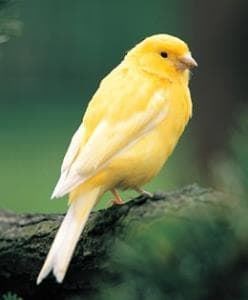
- Malinois canaries: The Malinois canary or waterslager canary has a very early historical origin, being the breed created in Belgium during the 18th century. Unlike the Spanish ringed canary and the Roller canary, the Molinois does not accept a plurality of shades in its plumage, the only color allowed being yellow, with black eyes (never with reddish eyes). Breeders understand that the color varieties affect the song of the Malinois, biologically, there is no evidence to support this belief. The physical complexion of the Malinois canary is robust and somewhat larger than that of the Roller canary. The characteristic trills of this breed are reminiscent of the sounds made by water running down a mountain stream, hence the name Waterslager.
- American Song Canary: This breed of canary was created in the United States in the 1930s, as a result of selected crosses between Roller canaries and Border fancy canaries. In the competitions of the breed, the variation in the color tone of the plumage is not judged. Its size must be less than 15 cm.
2.- Color Canaries: Those canriculturists who are dedicated to raising birds of the color canaries group, opt for specimens, coloration is determined. The canary is a very noble bird, offering an unusual chromatic diversity in the animal kingdom. Within this group, we find two subgroups:
- Lipochromic canaries.
- Melanistic canaries.
Both melanin and the different lipochromes are the substances that provide the various shades present in the canary's feathers.
- LIPOCHROMIC CANARIES: The basic colors of the canary's lipochromes are four:
- Yellow.
- Dominant white (with a yellow spot on the tips of the wings).
- recessive white.
- Red.
If there were no variables that affected the lipochromes, there would only be red, white, dominant white or pure yellow canaries, but this is not the case. This is because feather lipochromes can manifest themselves in different ways:
- Intense lipochrome: The color of the pen remains uniform throughout the entire surface of the pen.
- Snowy lipochrome: The coloration of the feathers fades towards the edge of the feathers.
- Ivory lipochrome: In this variant, the color is not as strong as the intense lipochrome, obtaining specimens of much softer colors, such as pink and ivory yellow.
- Mosaic lipochrome: In this variety the colors are intensely concentrated in some areas of the bird's body and soft in others, obtaining speckled specimens based on a certain tonality.
- Ocular lipochrome: When the melanin in the canary's eyes is absent or diluted, the lipochromes take its place. There are the following varieties of eyes according to the tone of the predominant lipochrome.
- Albino: White lipochrome prevails, the eyes are usually red or pink, reflecting the coloration of the blood vessels internal to the organ.
- Lutinos: Prevalence of yellow lipochrome.
- Rubino: reds.
The red coloration in canaries is the result of hybridization of the canary with the Venezuelan Siskin (Carduelis Cucullata).
- MELANIC CANARIES: Melanin is the dark pigmentation of canaries in different animal species. In the case of canaries, the presence of melanin in the pigmentation of the plumage gives the colors brown, green, chestnut and gray.
Such shades are the result of the combination of melanin with the different lipochromes present in the feathers of birds.
As in the lipochromic pigments, melanin can appear in the plumage of the canary in an intense, snowy or mosaic form. The melanin present in the bird's eyes gives them the same black and brown colorations.
3.- Laying canaries: It is made up of varieties that have a certain external morphology. Obviously, for a canary to be admitted as a specimen of a certain breed of this group, it must present certain traits that act as determinants for its acceptance. The specimen adopts to perch on the perch of its cage, when exhibited in a contest.
In this group we find the following five subgroups:
- Curly-plumaged canaries.
- position canaries.
- Tufted Canaries.
- Smooth-plumaged canaries.
- Design canaries.
4.- NUTRITION:
They are granivorous animals, which are enough of seeds for their subsistence.
It feeds on a mixture of seeds, especially canary grass and millet, also accepting wild herbs such as dandelion, vegetables such as lettuce, broccoli, Brussels sprouts, vegetables such as grated carrots and fruits such as apples, pear and oranges.
There is in Glu Glu Pet a specific supplement for shedding which must be added to the water.
During reproduction, good nutrition is essential. At Glu Glu Pet we have a wide variety of brands to give your canary the best nutrition.
You need to permanently have fresh water to drink, which must be changed every day.
A supply of calcium and some food supplement will be great for them, so it is recommended that they always have a cuttlefish bone in their cage, especially during the moulting or growth season.
From Glu Glu Pet we recommend that you give your canary to keep it comfortable and happy:
- Canary bars.
- Mineral cuttlefish.
- Total multivitamin birds.
Their diet is quite simple, they feed mainly on birdseed , which are seeds rich in carbohydrates.
You can mix it with different supplements, such as other seeds that provide your canary with a good amount of protein and nutrients.
The most common to give are black, hemp, reddish canola, oats , hemp and rapeseed.
The mixture preparations usually contain 50% canaryseed, 20% black, and 30% other seeds, such as reddish rapeseed or hempseed.
You can prepare the mixture at home, although you can also buy it at Glu Glu Pet, where we have the best preparations with a mixture of grains perfect for your canary, you can choose from a wide variety.
The food for newborn canaries, the chicks depend on the parents to feed themselves, so you will have to take special care to give them adequate food if you have young.
In order for the parents to feed their chicks correctly, you must ensure that they have brood paste , lettuce, egg paste , seed sprouts and fresh water at all times.
The constant supply of these foods will help the pups grow healthy and begin to form their fur.
Canaries, especially during the breeding season but also for moulting and growth, need extra calcium supplies. To do this, we can put calcium stones in the cage that we will find in Glu Glu Pet.
The most recommended for them is the Cuttlefish Bone , which in addition to providing calcium, will be a perfect tool to sharpen their beak.
A good way to imitate the way canaries get food in their natural habitat is to put natural branches or spikes of different seeds attached to the cage with zip ties. It's a great way to motivate them.
The snacks in a timely manner we can give them a snack to escape the monotonous diet.
5.- PRICE:
When purchasing your canary, it is essential to check that it is healthy.
To find out the age of the canary to be purchased, you must follow a series of indications:
- During its first year of life, the canary has smooth and soft pink legs and claws, the plumage has delicate reflections and the beak is tender.
- Later, the legs are covered with scales, the feathers become thicker and the color is accentuated; the beak lengthens and hardens.
It is important when buying our canary, to know that there are illegal sellers and counterfeiters who try to defraud potential customers, so it is better to go to a specialized store or a legally approved breeder, who have all the permits and health certificates of the canaries that sell
The price of a canary can vary greatly from one to another depending on the breed.
We can find from canaries for 15 or 20 euros to canaries for 100 euros, which cost more because they are more expensive breeds.
In addition, the males are usually more expensive than the females, since the males are the ones that really sing.
6.- CARE:
Canaries are birds that take care of their own care.
If you provide them with the necessary accessories that we at Glu Glu Pet recommend, your canary will grow up healthy and happy, such as:
- bathtubs.
- Perches: made of wood for birds are very important, even better if they are of different thicknesses, textures and inclinations because that improves the circulation and the muscles of their legs, preventing osteoarthritis and atrophies in canaries.
- Sticks of different thicknesses.
- cuttlefish bone
- nests .
- swings.
They are very easy to maintain.
If you decide to have a canary as a pet, try to buy a birdcage as large as possible.
These birds need enough space to strain daily and maintain good health.
The perfect cage for canaries should have plenty of horizontal space, vertical space is not so important, also make sure that the separation between bars does not exceed 12 mm.
You will also need to include several bird toys that they can entertain themselves with. Without them, canaries quickly get bored and begin to exhibit strange behavior.
It is very important to place the accessories in such a way that they do not obstruct the flight space.
During the night it is good to cover the cage, so that your canary gets used to a light/dark rhythm as close as possible to the natural cycle of night and day.
A special stage for canaries is the moulting season that usually takes place at the end of summer.
During this stage, it is important not to upset our friend with many changes in light, temperature or other environmental conditions. He will need a lot of stability to be happy and calm in his cage.
Keep its habitat clean and pamper it a lot, at Glu Glu Pet we recommend the best products that can help you:
- Cage disinfectant.
- Drinkers.
- Feeders.
- air fresheners
- Insecticides.
CAGE:
The cage for our canary should be as large and spacious as possible so that they can exercise and move around inside it. We must bear in mind that it will spend a large part of its life in it, so it must be a suitable and pleasant cage, if the cage is too small it will cause stress and make it sick. The minimum size for a canary cage should be 100 cm. wide x 80 cm. long x 60 cm. High.
SHAPE:
When we choose the cage for our canary, we should not only look at its size, but also its shape. We are used to seeing dome-shaped, rounded or shaped cages for canaries.
Cages that are not rectangular can generate discomfort and stress for our birds, as it is difficult for them to find reference points within them. That is why when choosing a cage for our canary we must make it as rectangular as possible, avoiding protrusions and corners that could damage it.
In addition, canaries are birds that fly horizontally, so we must ensure that the cage has width rather than height.
BARS:
The bars of the cage must be horizontal, on at least two of the sides. In this way, our canary will be able to climb them. Of course, in the case of canaries, the bars must be at a distance of less than 1.5 cm between them, so that they cannot stick their heads in and suffocate.
MATERIAL:
The cage must be metallic, better if it is stainless steel, as they are more durable. In addition, those that are made of wood or plastic are more difficult to clean and keep free of fungi and bacteria.
TRAY:
It is good that in the lower part of the cage there is a removable tray to be able to easily clean the depositions of our canary. In addition, it is advisable that there is a grid that prevents our canary from taking food that falls to the bottom of the cage.
SITUATION:
We will put our canary's cage in a quiet area where it can receive sunlight, which is not direct. We must prevent them from being drafted so that they do not have respiratory problems and be careful with the air conditioning. In hot weather, we can take the cage outside, duly protected, in a shaded space. We have to respect the hours of light and darkness of the day so that they can take a measurement to start the moult. For this reason, at sunset, when we see that our canary is beginning to relax, we can cover the cage. We must also be careful not to keep our canary near heat sources, or at temperatures above 15 degrees, as this can lead to a "pathological molt", something that can affect the health of our canary.
CAGE CLEANING:
We must maintain a weekly routine of cleaning the cage and all its accessories, otherwise our canary could get sick.
Once a week we should clean the entire cage with soap and water, along with the accessories and toys, to remove all residue.
Once this is done, we will disinfect with a non-toxic disinfectant or bleach diluted in warm water. We will rinse and dry very well to make sure that there are no traces, not of disinfectant, not of water that can cause fungi.
FEEDER:
At Glu Glu Pet we have a large number of feeders adapted to all types of cages, you just have to ask us and we offer you the best service and the best quality of our products.
DRINKER:
The ideal are ball drinkers like those for hamsters, since with container water the water gets dirty easily.
It is possible that our canary is not used to it and still does not know how to drink from them, for that reason, we can put a container drinker with water in addition to the ball drinker and when it drinks without difficulty we remove the container.
HANGER:
Canary cages come with very basic plastic perches or perches. To guarantee the health and happiness of our canary, we can put perches on natural branches that we can buy at Glu Glu Pet, we have the highest quality.
Natural branch perches are irregular and allow them to file their nails and exercise their paws.
You have to be careful when putting the perches in the cage because if we put them under the feeder, then the cimida will end up dirty and contaminated with feces.
TOYS:
We must enrich the environment of our canary with different objects and accessories suitable for our canaries, we can buy them at Glu Glu Pet, a wide variety of toys for your canary.
7.- HEALTH:
Most frequent pathologies of Sirinus canaria and its symptoms:
- The change of canaries: The change of canaries is a physiological process consisting of the change of plumage after the arrival of the summer season. under normal circumstances it usually ends in about twenty-five or thirty days, as a general rule, it occurs every year, in addition, in male canaries, apart from the loss of plumage, they remain without emitting their characteristic songs. During the time that this phenomenon lasts, it is essential that the canary is well fed, we will increase the portions of fruit and vegetables, at the same time that we can supply it with some type of vitamin complex, it is necessary that it be housed in a spacious cage, that way, it will be able to exercise, shedding the dead feather and favoring the appearance of the new plumage. Regular baths during the moulting period are very important, it favors the bird's recovery more quickly.
- Deworming of canaries: For the prevention of parasites, the canary will require periodic deworming, both external and internal, in order to avoid the drastic effects that this type of parasite can have on the animal, the characteristic symptoms in infected specimens are mainly:
- General discomfort.
- feather loss.
- Anemia or diarrhea.
Regardless of deworming, it is necessary to frequently disinfect the bird's cage and other accessories. At Glu Glu Pet we inform you of all the most convenient products for your canary in this regard, so that your canary is as healthy as possible.
- Loss of feathers: If we observe loss of feathers in hot weather, we must check that the room where the cage is located is not excessively heated, since it could be a pathological molt. In the event that the canary is agitated, pulls out its feather or scratches itself frequently, it may be infected by external parasites, it is important to disinfect the cage and accessories, we will also deworm it with a product that we can find in our store.
- Balled canary: it is a symptom of disease or lack of some food, the bird ruffles its plumage, in extreme cases it even hides its head under its wing, as if it were asleep, it is necessary to explore the canary, we will check the sound of its breathing, if this is panting or with excessive noise, it may be some pathology that affects the respiratory tract.
- Fractures: The most common are broken legs or wings, to prevent them it is necessary not to manipulate the canary excessively.
- Diarrhea: Diarrhea is frequent in canaries, we will have to temporarily remove the vegetables and feed them for several days simply with birdseed, in a short time, the bird will return to normality.
- Eye pathologies: if our canaries have ulcerous eyes, constant tearing, excessive rheum or the existence of foninculi, it is important to visit the veterinarian.

